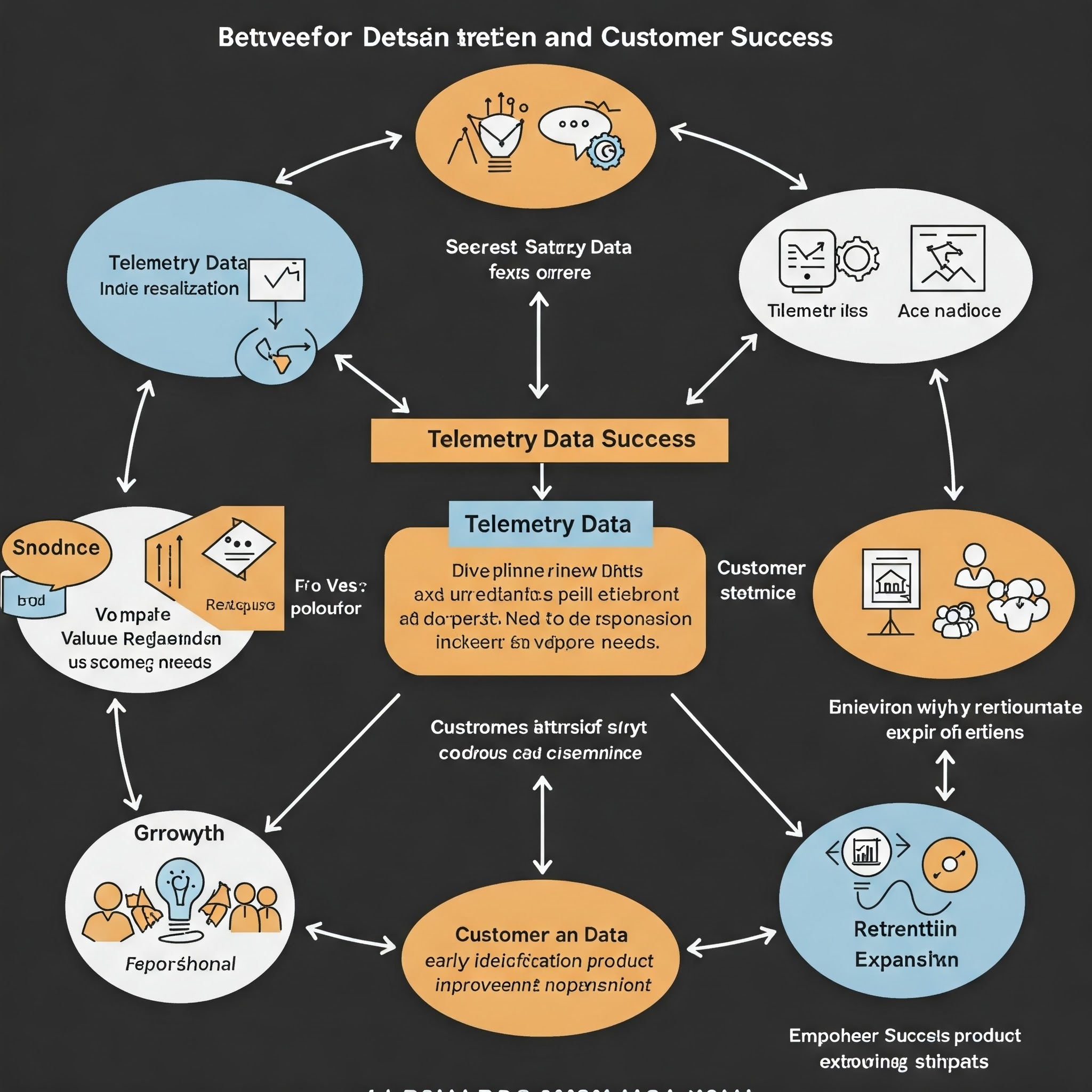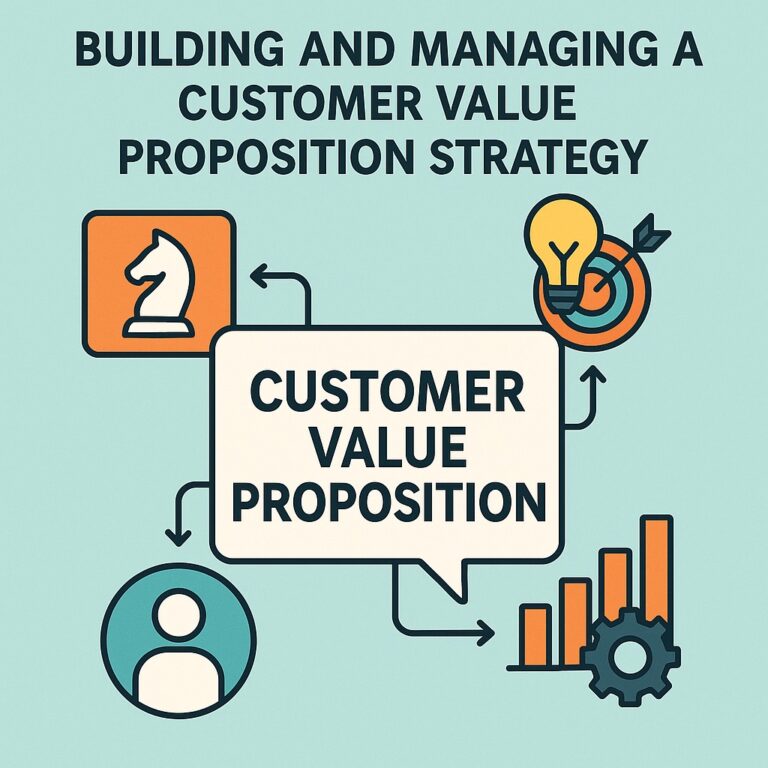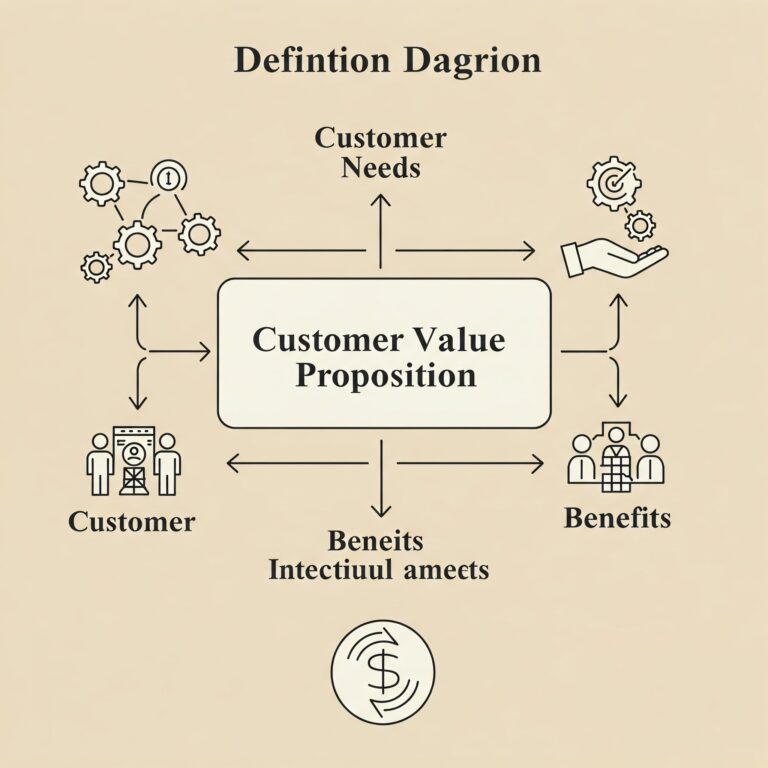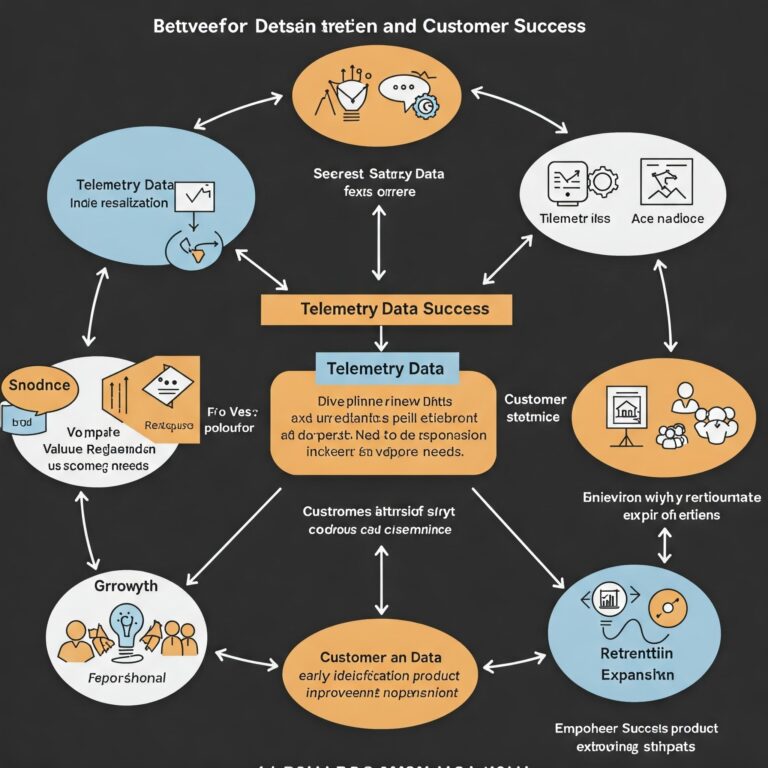In today’s digital landscape, telemetry data is a powerful tool businesses use to optimize performance, enhance customer experiences, and drive post-sales value realization. From metrics and logs to traces, telemetry data provides real-time insights into system performance, enabling businesses to identify issues proactively, make data-driven decisions, and optimize customer outcomes.
This article examines how telemetry data contributes to post-sales value realization, identifies key metrics to track, and provides examples of its practical applications.
What is Telemetry Data?
Telemetry data is the automatic data collection and transmission from digital systems, applications, or physical assets to a centralized platform for monitoring, analysis, and optimization. It is typically categorized into three types:
- Metrics – Quantitative data that measure system or application performance (e.g., load time, CPU usage, API response times).
- Logs – Time-stamped records of system events or user actions.
- Traces – A series of events that track the path of a request through a system.
By leveraging these telemetry data types, businesses can identify inefficiencies, optimize system performance, and enhance customer value.
How Telemetry Data Drives Post-Sales Value Realization
Post-sales value realization ensures that customers achieve tangible product or service benefits. Telemetry data plays a crucial role by providing insights into adoption, performance, and customer success outcomes.
- Real-Time Insights & Proactive Issue Identification
One of the key advantages of telemetry data is its ability to provide continuous visibility into system performance. This enables businesses to:
- Monitor System Performance: By tracking performance metrics, organizations can understand how different components function and optimize them for better efficiency.
- Identify Bottlenecks & Inefficiencies: Telemetry data helps pinpoint areas where slow performance, downtime, or user friction may exist, enabling faster resolution.
- Enable Proactive Problem-Solving: Telemetry data allows for early detection and resolution of potential problems before they escalate instead of waiting for users to report issues.
For instance, a SaaS company using telemetry data can detect when users abandon a workflow due to complexity and take proactive steps, such as introducing guided walkthroughs or in-app assistance.
- Data-Driven Decision Making
Telemetry data enables informed strategic decision-making across various business aspects, including operations, product development, and customer success. With telemetry insights, businesses can make informed, data-driven decisions about resource allocation, feature development, and process optimization.
- Informed Decision-Making: Telemetry insights allow businesses to make data-driven choices about resource allocation, feature development, and process optimization.
- Optimizing Operations: Organizations can track usage patterns, system loads, and feature engagement to refine their product roadmap and enhance operational efficiency.
- Improving Customer Experience: Telemetry data enables businesses to understand which features customers find most valuable, facilitating personalized recommendations and targeted user education.
For example, if telemetry data indicates low engagement with a key feature, businesses can redesign the UI/UX or provide more effective in-app guidance to enhance adoption.
- Value Realization Examples
Telemetry data is instrumental in demonstrating business value across different industries. Here are a few real-world applications:
- Predictive Maintenance: In industries that rely heavily on physical assets (e.g., manufacturing, healthcare, and logistics), telemetry data can help predict equipment failures, enabling timely maintenance and minimizing downtime.
- SaaS Value Realization: SaaS companies use telemetry data to track how customers interact with their software and demonstrate ROI through improved efficiency, automation, and productivity.
- Optimizing User Experience: Businesses leverage telemetry data to identify friction points in user workflows, which improves product usability, increases engagement, and increases retention.
For instance, a customer support platform can utilize telemetry data to track agent efficiency, reduce response times, and optimize ticket resolution workflows, enhancing the overall customer experience and demonstrating its value to its users.
Key Metrics to Track for Value Realization
Tracking these metrics for value realization is a significant step toward success. By focusing on the following key performance indicators (KPIs), businesses can measure and quantify the real-world impact of their products, enabling them to make continuous improvements and drive value.
- Time to Value (TTV): How quickly customers realize the benefits of a product or service.
- Customer Outcomes: Are customers achieving their objectives with the product?
- Return on Investment (ROI): Measuring the financial impact of using telemetry-driven insights.
- Customer Satisfaction (CSAT): Gauging customer satisfaction levels based on product improvements and support effectiveness.
- Net Promoter Score (NPS): Measures customer loyalty and willingness to recommend the product.
Tracking these metrics ensures that businesses can quantify the real-world impact of their products and make continuous improvements to drive value.
How ValueCore Helps Customers Leverage Telemetry Data for Value Realization
At ValueCore, we specialize in helping organizations maximize their post-sales value realization by leveraging telemetry data to drive customer success, retention, and growth. Our approach enables businesses to proactively address challenges, optimize adoption, and demonstrate measurable value, ultimately enhancing customer satisfaction and loyalty.
Here’s how ValueCore can support your organization in achieving data-driven customer success:
- Defining Success Metrics: We work with your team to identify the key telemetry data points that indicate value realization, including adoption, engagement, and business impact.
- Integrating Telemetry with Customer Success Platforms: We align telemetry data with platforms like Salesforce to provide real-time insights for customer success managers.
- Building Customized Dashboards & Alerts: Our expertise ensures that Customer Success Managers (CSMs) have the correct automated reports and alerts to take proactive action before issues escalate.
- Enabling Value-Based Conversations: With telemetry-backed data, CSMs can demonstrate ROI in QBRs and renewal discussions, helping justify renewals and upsells.
- Identifying Expansion Opportunities: We analyze usage patterns to determine when customers need additional features, seats, or services, providing a data-driven path to expansion.
- Proving ROI to Decision-Makers: ValueCore helps organizations build ROI calculators and value reports that showcase how the product has delivered tangible benefits.
- Create Executive-Level Reporting: We develop customized reports and dashboards that enable leadership teams to track progress in value realization and make informed decisions.
Why Choose ValueCore?
- Deep Expertise in Customer Success & Value Realization
- Strategic Integration with Your Tech.
- Proven Results in Driving Retention & Growth
Are you looking to enhance value realization with telemetry data? Schedule a demo today!




